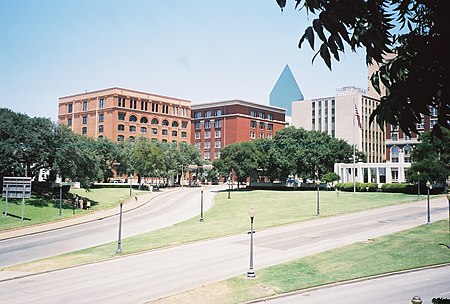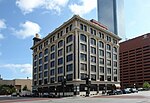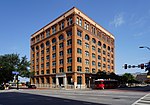Dealey Plaza
Assassination sitesBuildings and structures associated with the assassination of John F. KennedyDowntown DallasHistoric districts in TexasHistoric districts on the National Register of Historic Places in Texas ... and 6 more
History of DallasJohn F. Kennedy assassination conspiracy theoriesNational Historic Landmarks in TexasNational Register of Historic Places in DallasParks in DallasWorks Progress Administration in Texas

Dealey Plaza is a city park in the West End Historic District of downtown Dallas, Texas. It is sometimes called the "birthplace of Dallas". It was also the location of the assassination of John F. Kennedy in 1963; 30 minutes after the shooting, Kennedy was pronounced dead at Parkland Memorial Hospital. The Dealey Plaza Historic District was named a National Historic Landmark on the 30th anniversary of the assassination, to preserve Dealey Plaza, street rights-of-way, and buildings and structures by the plaza visible from the assassination site, that have been identified as witness locations or as possible locations for the assassin.
Excerpt from the Wikipedia article Dealey Plaza (License: CC BY-SA 3.0, Authors, Images).Dealey Plaza
Commerce Street, Dallas
Geographical coordinates (GPS) Address Nearby Places Show on map
Geographical coordinates (GPS)
| Latitude | Longitude |
|---|---|
| N 32.778333333333 ° | E -96.807222222222 ° |
Address
George L. Allen Sr. Courthouse
Commerce Street 600
75201 Dallas
Texas, United States
Open on Google Maps










